A reminder of the context I am working within:
To make this crystal clear and to any prevent confusion. I am working within the brief 'Design Contest Grow 2023-2024' by Cor Unum, not any other. Here are some quotes from the brief above that I am using as my 'context' that I am required to 'understand' and work within: "Be inspired by the ingenious solutions and beautiful forms and structures of nature itself". "inventing designs that promote the well-being of both humans and nature on a small scale". "How can ceramic designs create emotional and sensory connections to nature?" and most importantly "think outside conventional production methods". This topic is titled 'Understanding Context'. The previously highlighted is the context I am understanding. If you look at the whole brief, words such as "or" and "consider" are used. In the Oxford dictionary, "or" can be defined as "used to link alternatives" and "consider" can be defined as "take (something) into account when making a judgement". Therefore when the word "or" is used I chose an alternative. When the word "consider" is used I have considered it.
Further Research into Katie Spragg: (Secondary Research)
I am keen on selecting the tree and hand design to pursue but I want to research further into Katie Spragg because her work directly inspired my initial design, particularly the 'Turfs' pieces.
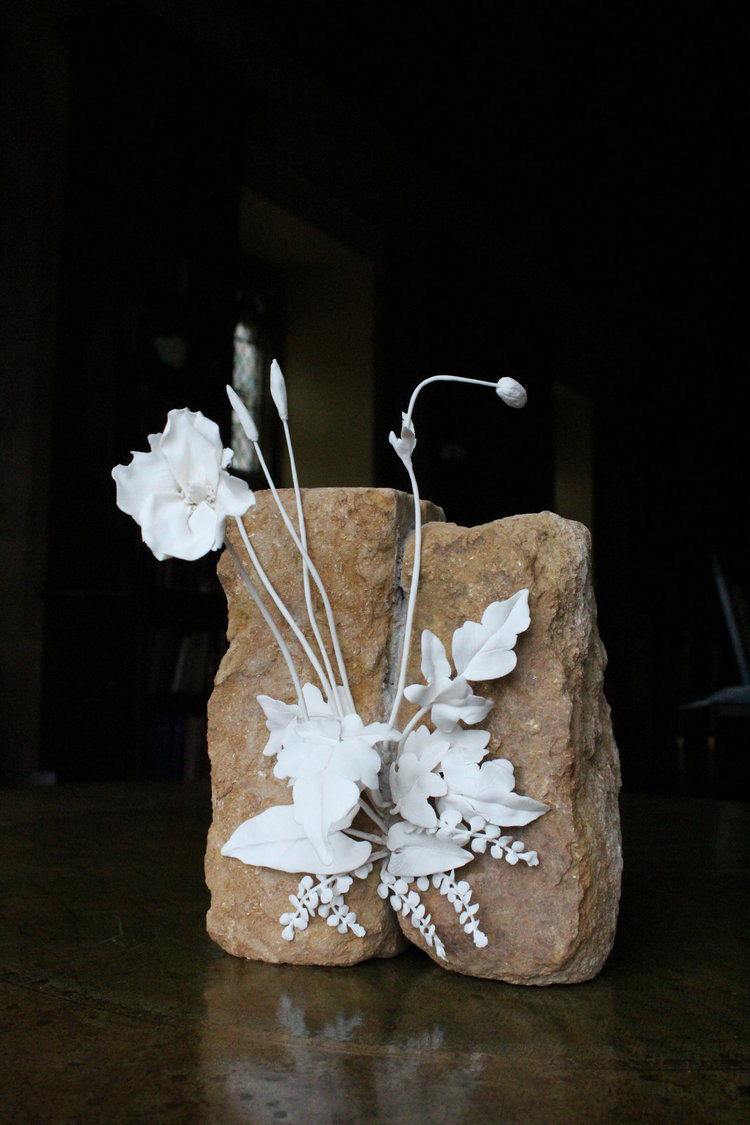
https://www.katiespragg.com/#/forde-abbey-series/
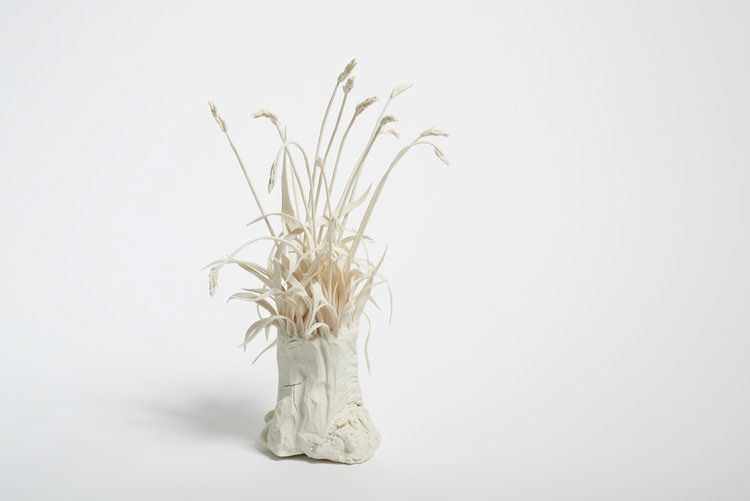
https://www.katiespragg.com/#/turfs/
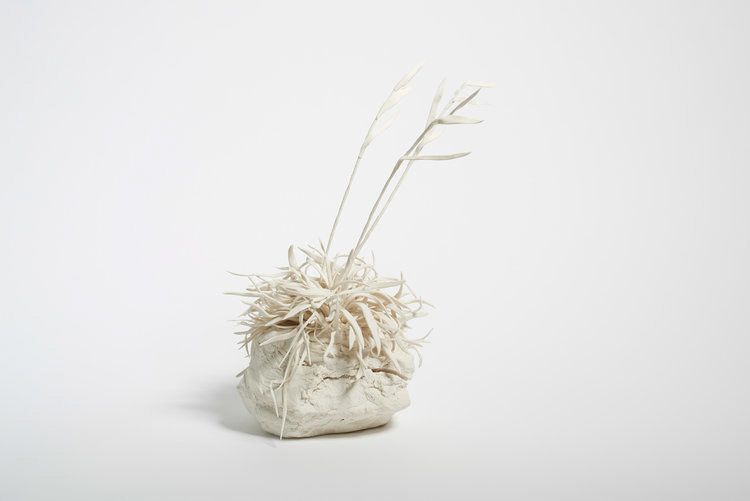
https://www.katiespragg.com/#/turfs/
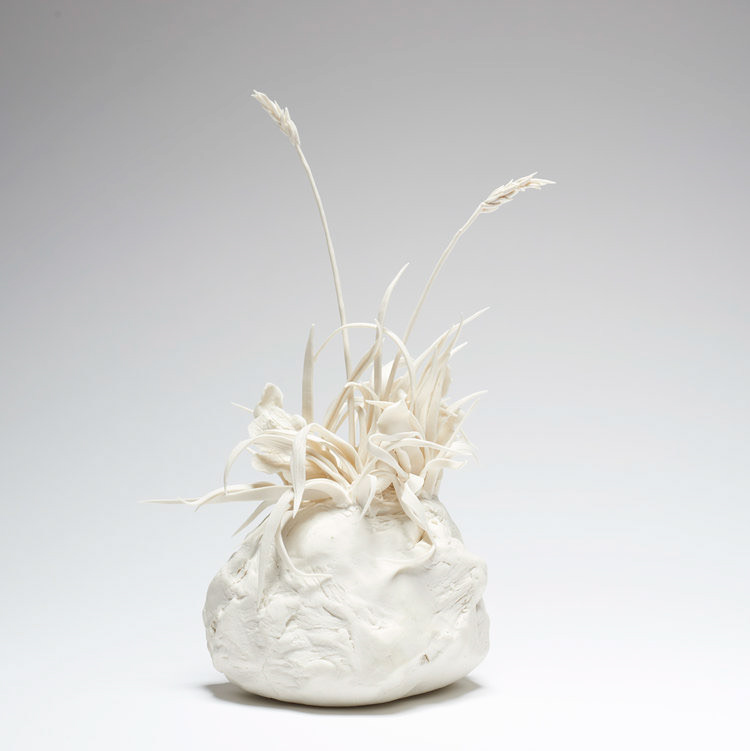
https://www.katiespragg.com/#/turfs/
The first image is from Katie's 'Ford Abbey' collection (Stone and porcelain) and the others are from her 'Turf' collection (Porcelain). I was inspired by these pieces for the Tree and Hand piece. Her pieces change from one object into another and are designed to be replicas of nature. The colour reinforces the two different parts of the pieces as well as the different materials. In my piece I want to encourage the seamless transition between the two parts but also make it clear that they are different. Katie uses different materials and colour. In my piece, I will use the same material throughout but may vary the colour using different glazes and oxides depending on any further research. Katie's piece's are relevant to the context and provide a clear answer to a question posed in the brief, "How can ceramic designs create emotional and sensory connections to nature?". Katie's work is mainly ceramic and creates an emotional and sensory connection by taking the designs found in nature and creating pieces that don't just replicate specific plants, but capture the essence of how plants grow and interact with their environment usually, quite unusual ones. From the images above you can see how the grass is tangled, the leafs are stretching up toward the light and the complexity of the whole design.
Idea selection and design development:
From my initial ideas and idea testing, I have chosen a design I want to pursue. This is the development of that design.
I wanted to take my 2D slip design of a hand and transform it into 3D. From the Cor-Unum brief I decided to focus on the quote "Be inspired by the ingenious solutions and beautiful forms and structures of nature itself". By taking the tree bark and the bones of the hand, I combined the natural structure's of both elements. However, this design leaves a lot of unused clay which could be utilised so in further iterations I need to somehow reduce the amount used.
Further research into Alex Goad: (Secondary Research)
In order to reduce the amount of unused clay, I will look further into Alex Goad and his lattice structures used in the MARS project.
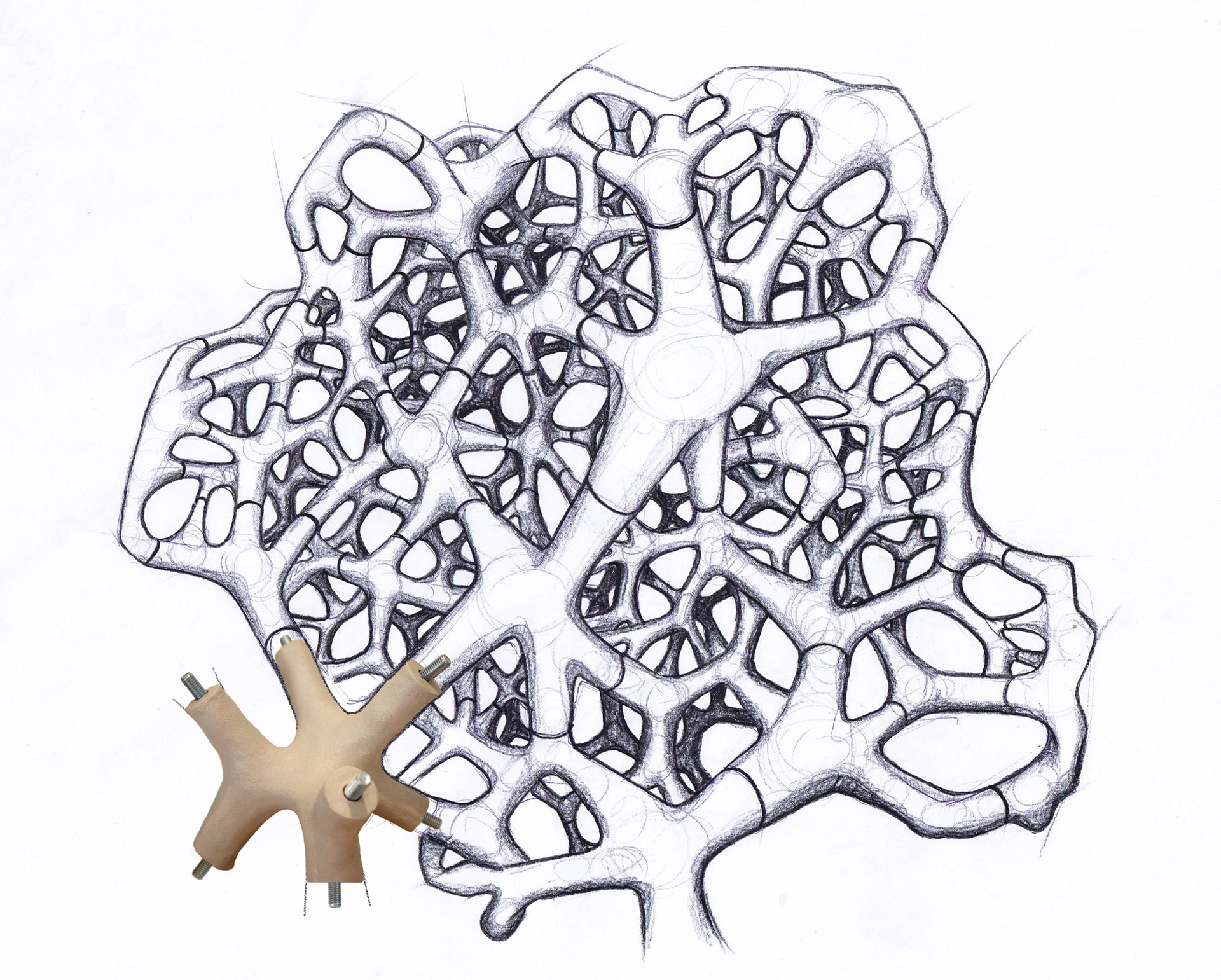
https://www.alex-goad.com/mars
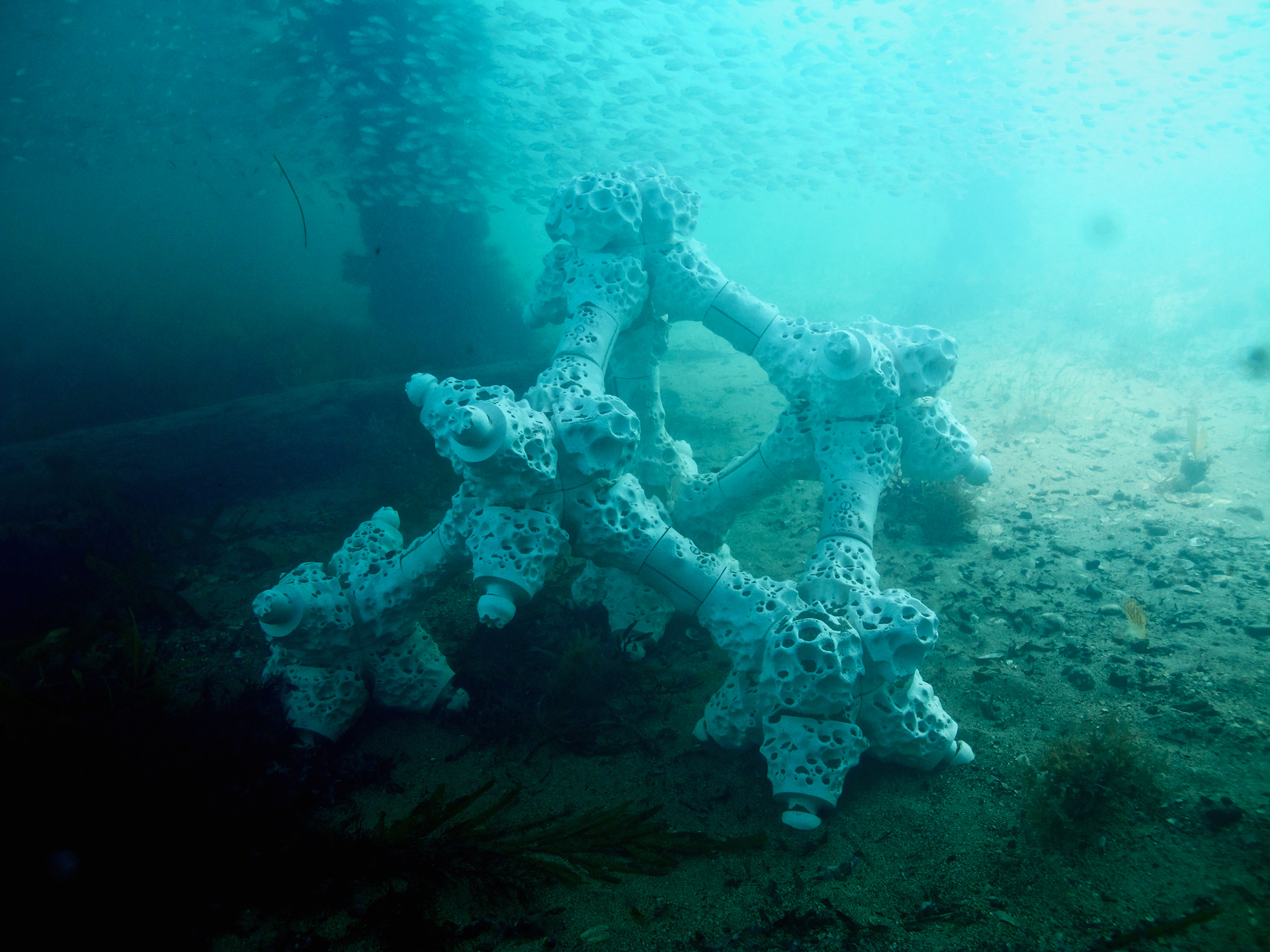
https://www.alex-goad.com/mars
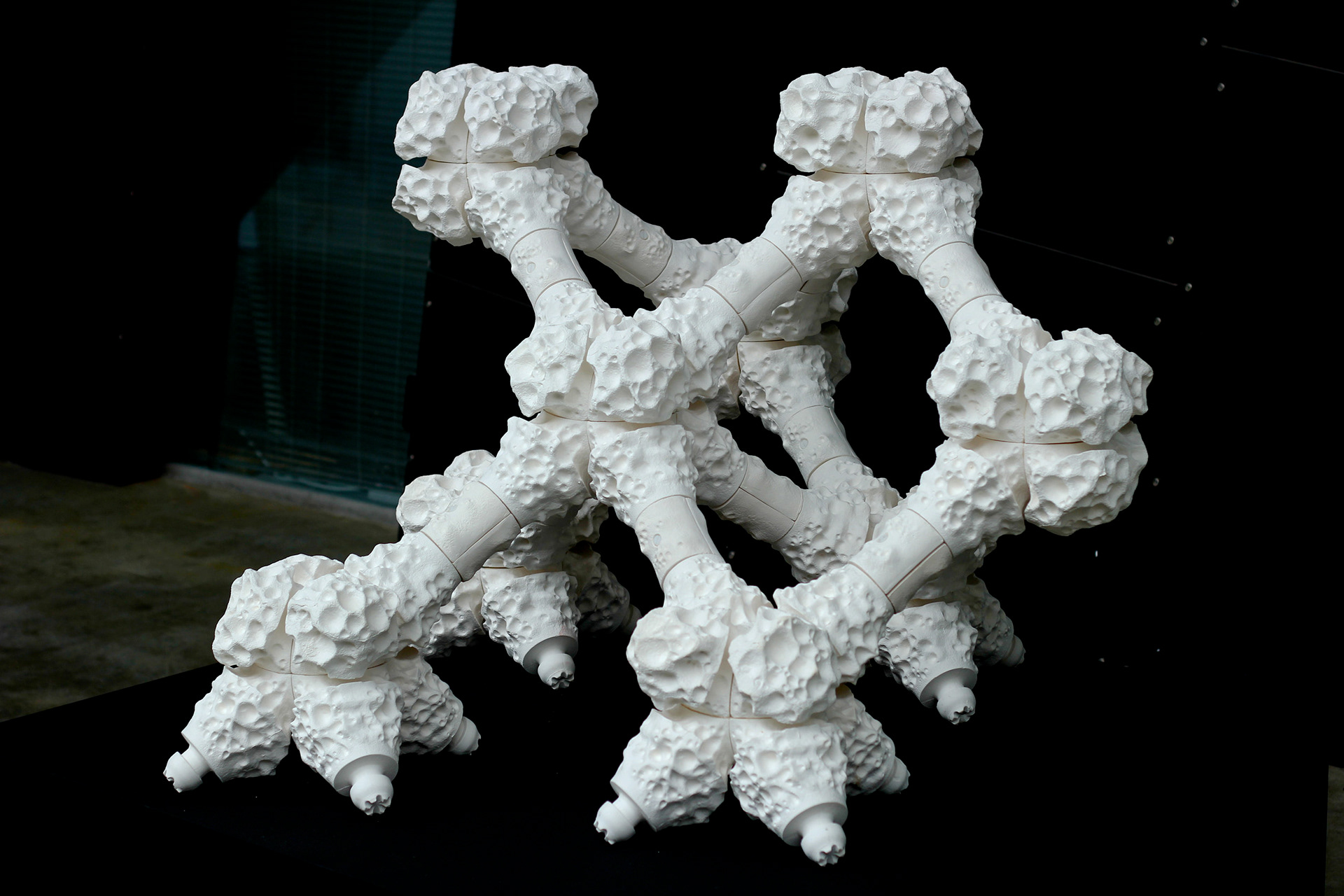
https://www.alex-goad.com/mars

https://www.alex-goad.com/mars
The structure of the lattice is a design by nature and has been carved and changed through the entire life of Earth. The lattice provides incredible strength at a low density and is a pattern found in every single living organism on the planet. Alex used nature's refined design that's taken the earth's entire lifetimes to create in a single instance. His work is not just nice to look at but it provides safety and a home for aquatic life. Alex used screws to join his structures together which I can't do for this brief, however it seems he has done this because of scale. I could use the structure but make it connected using slip and clay. Alex has added texture to give the appearance of coral, as well as providing the vital surface for bacterial growth and other natural growth. I may want to look at bone texture and see how I can implement that into my structure.
Human Bone Texture:
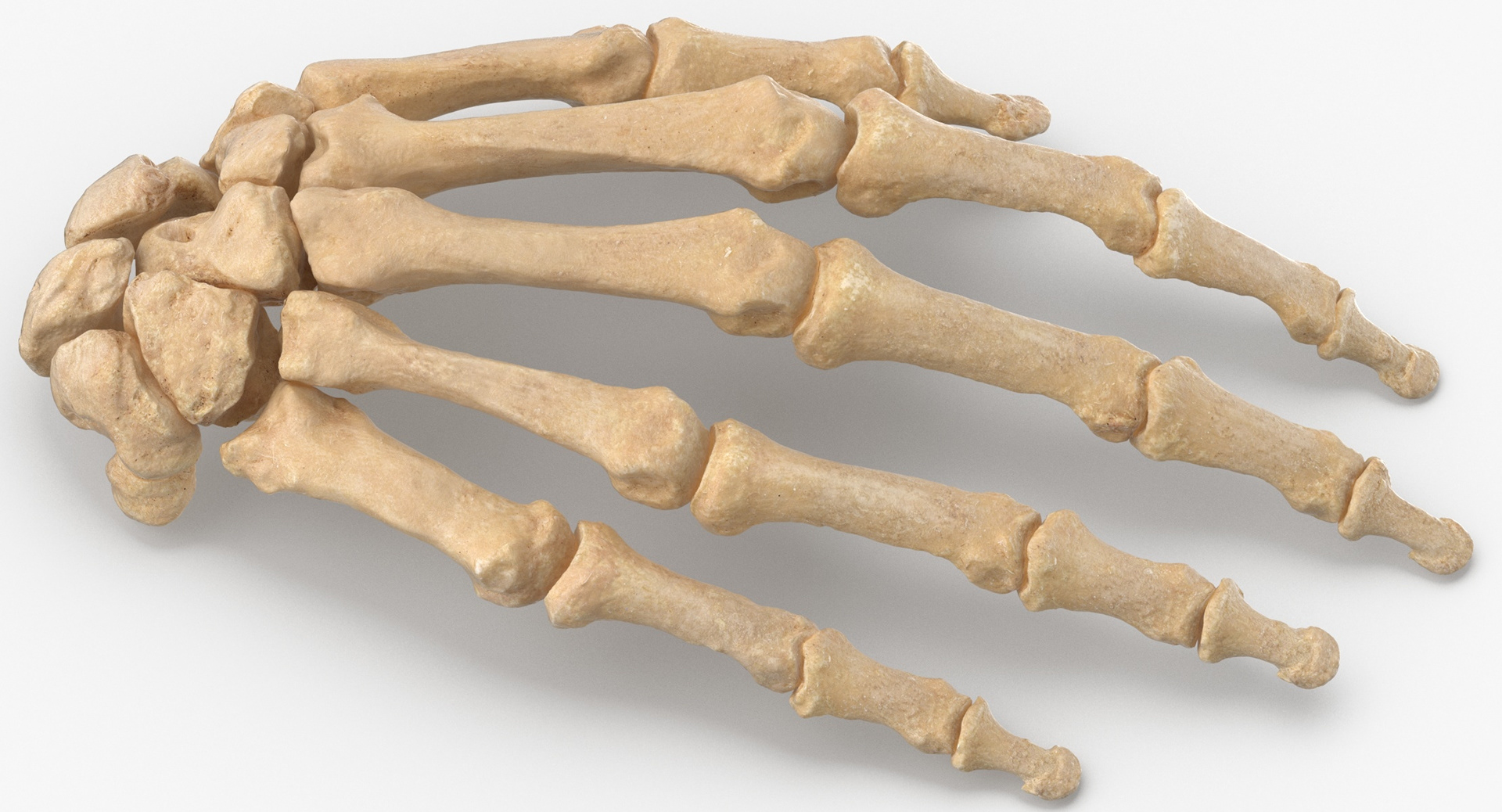
https://www.turbosquid.com/ko/3d-models/3d-human-hand-bones-anatomy-1581641
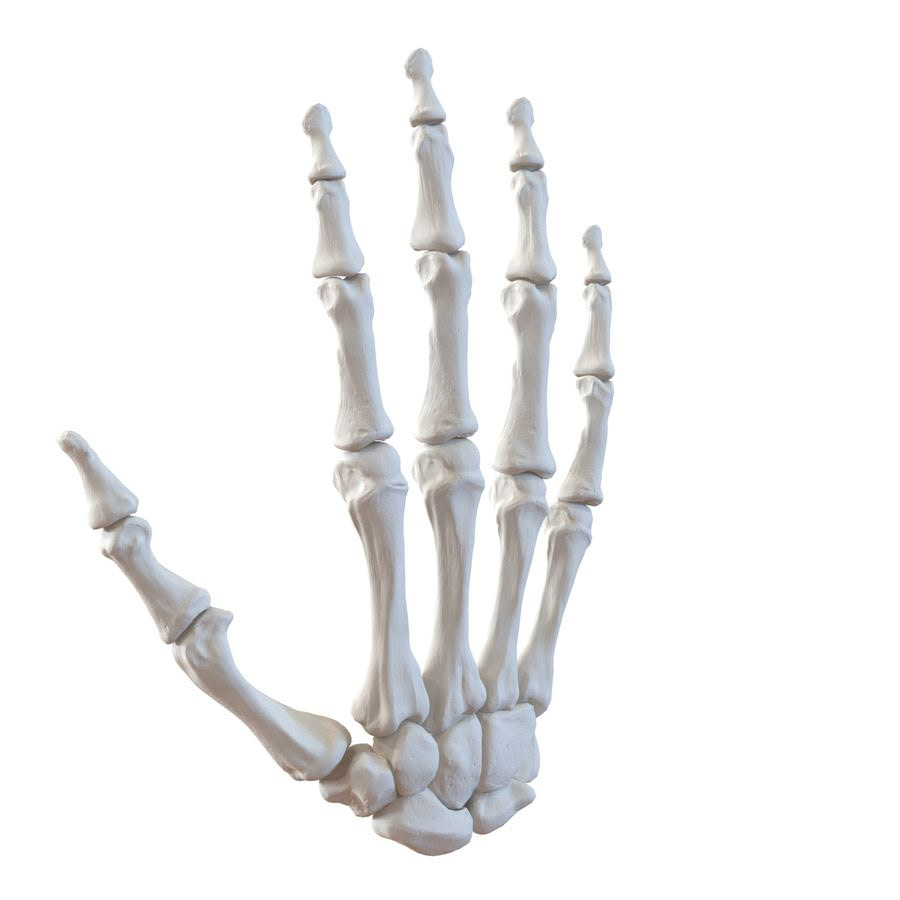
https://free3d.com/3d-model/human-hand-bones-5869.html
Although both images are from 3D renders, they still capture the texture. At first glance, they seem pretty smooth but upon closer inspection, they have small grooves and unevenness across the surface. My first idea is to fire the piece, then take a Dremel to cut out small little grooves and ridges across the bone area.
Tree Bark collection: (Primary Research)
I went out to collect Tree bark from a nearby wood. This will be used to get texture on another test piece for the sides of the hand.
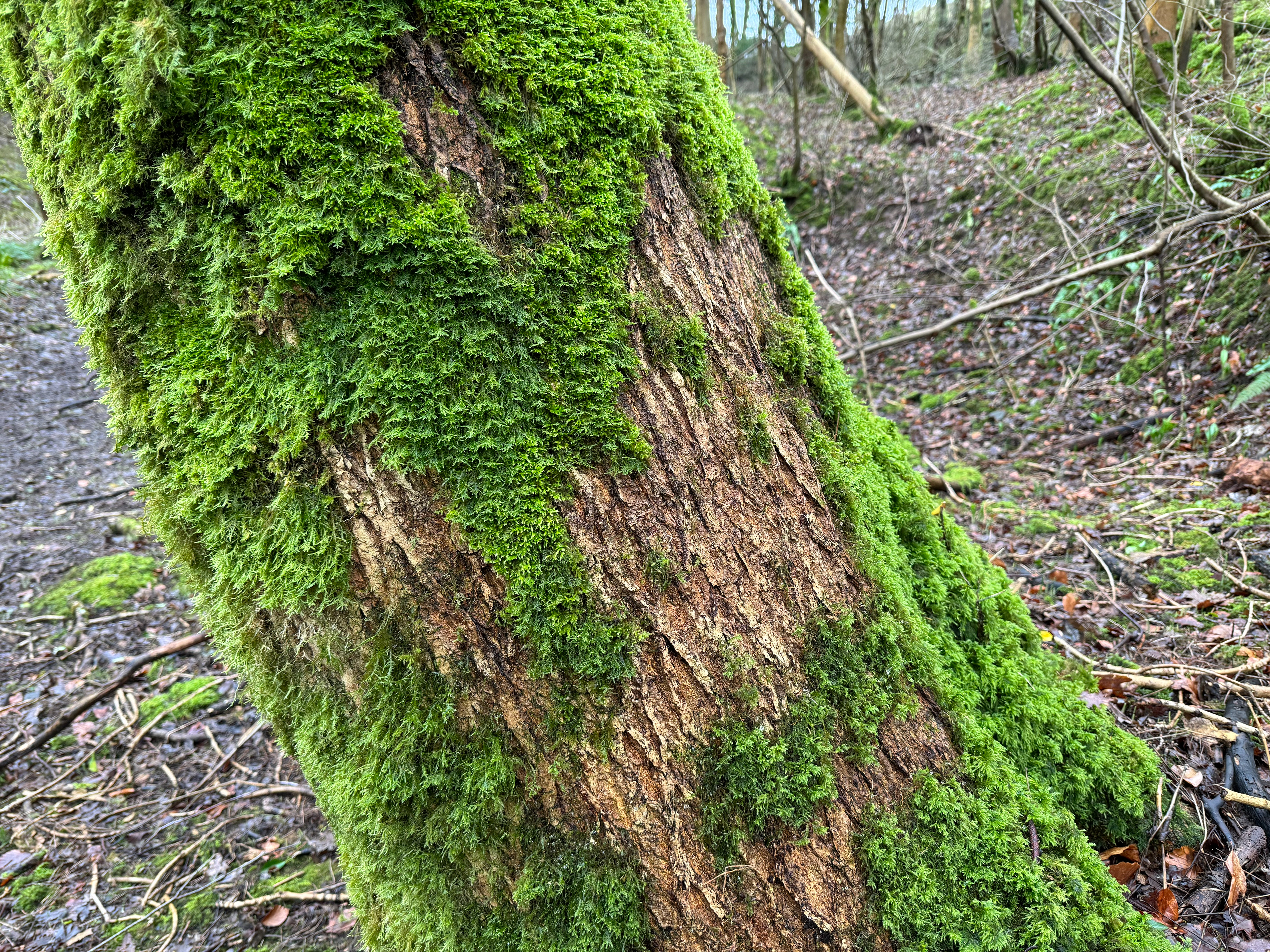
Tree bark that I didn't take but looked perfect.

Close up of perfect tree bark
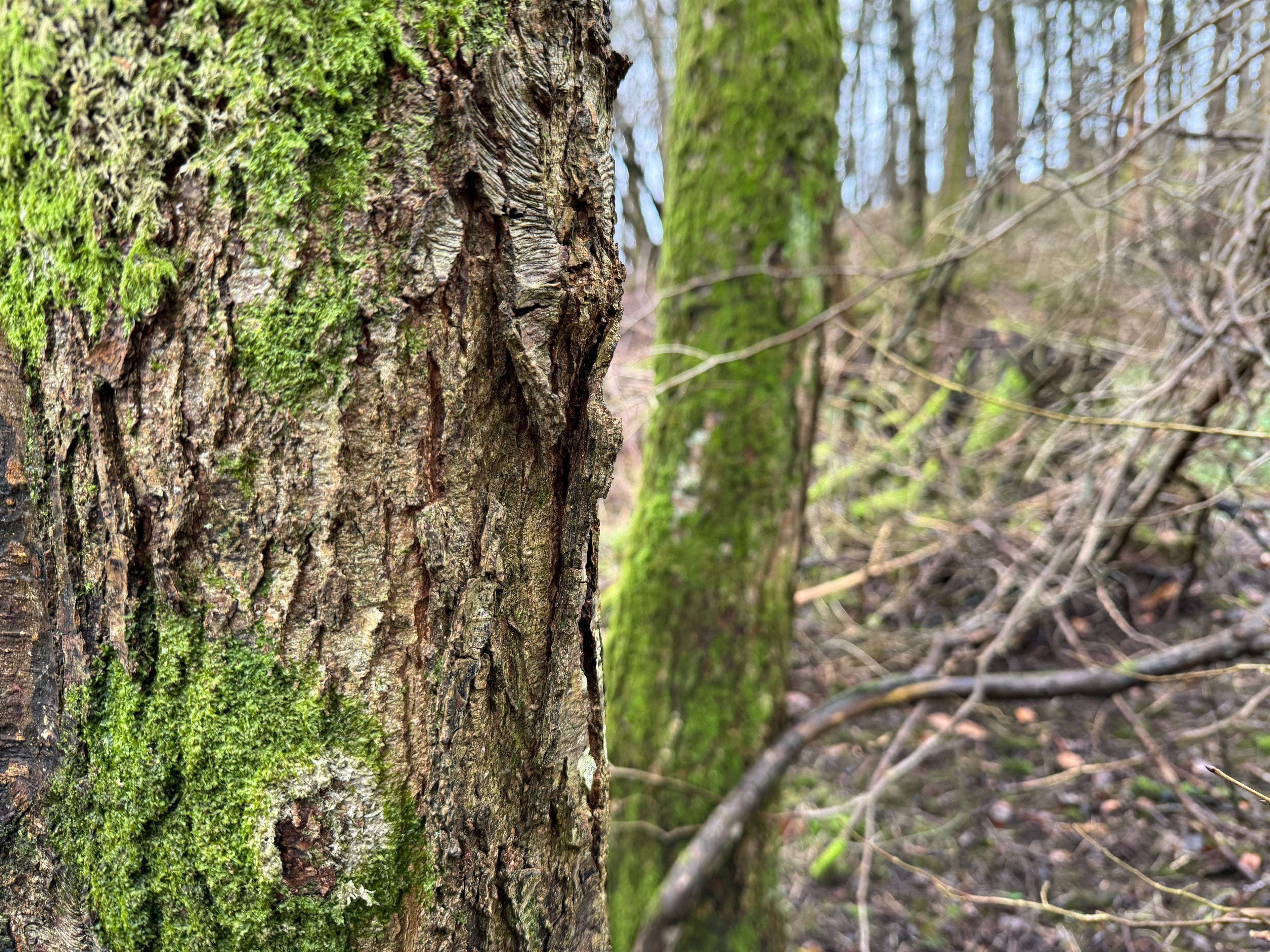
Tree I took bark from
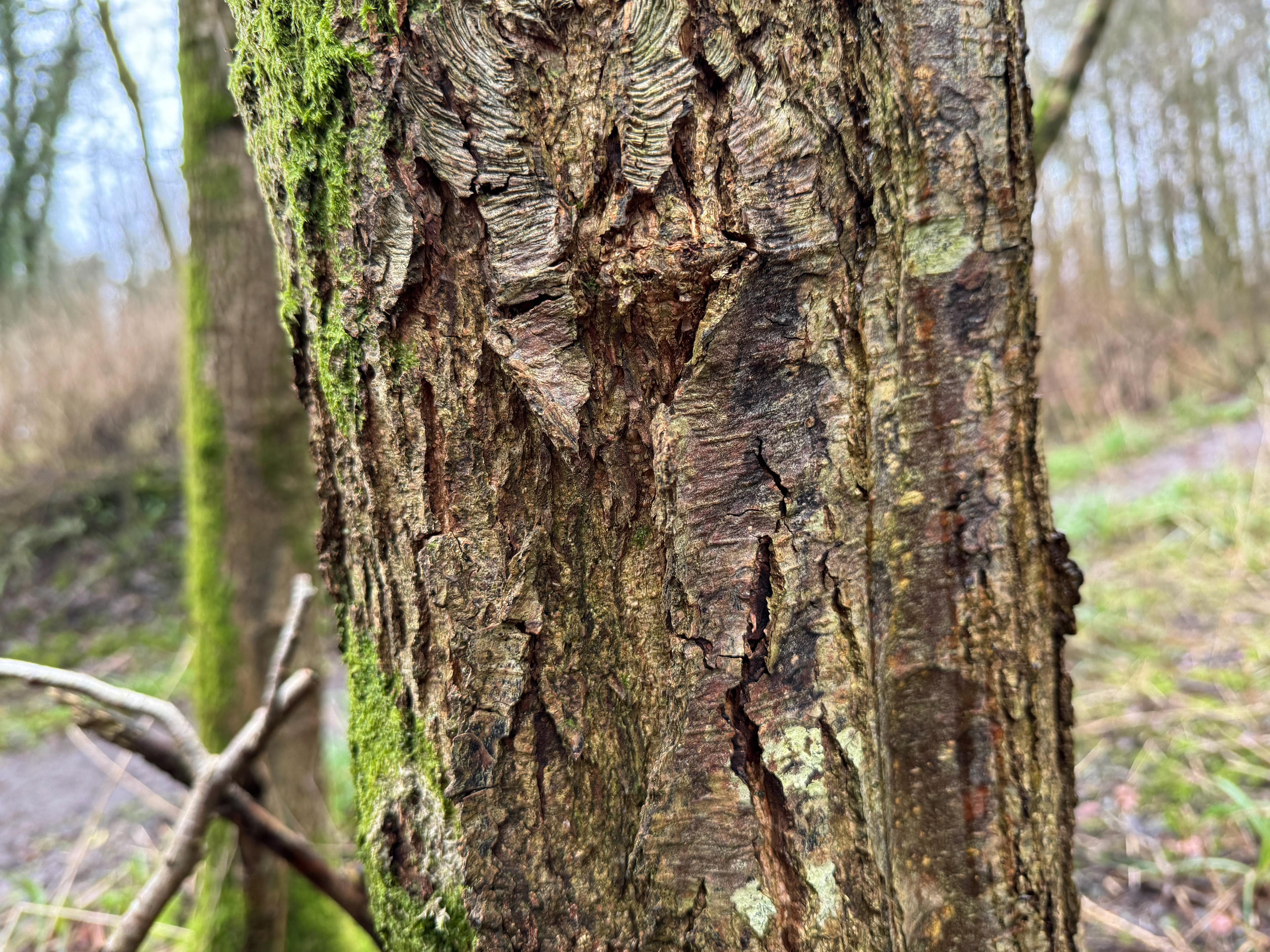
Tree I took bark from
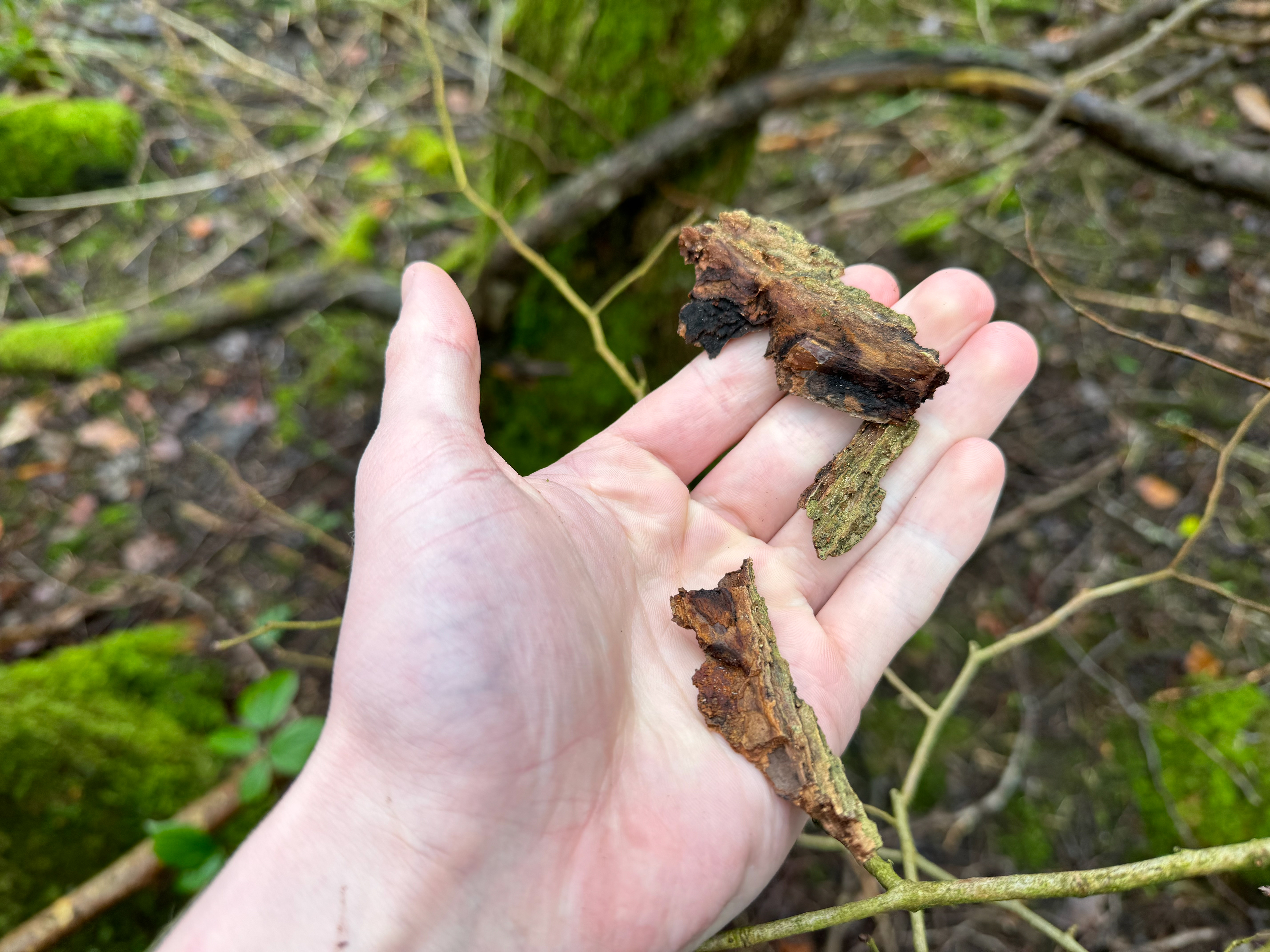
Tree bark I took
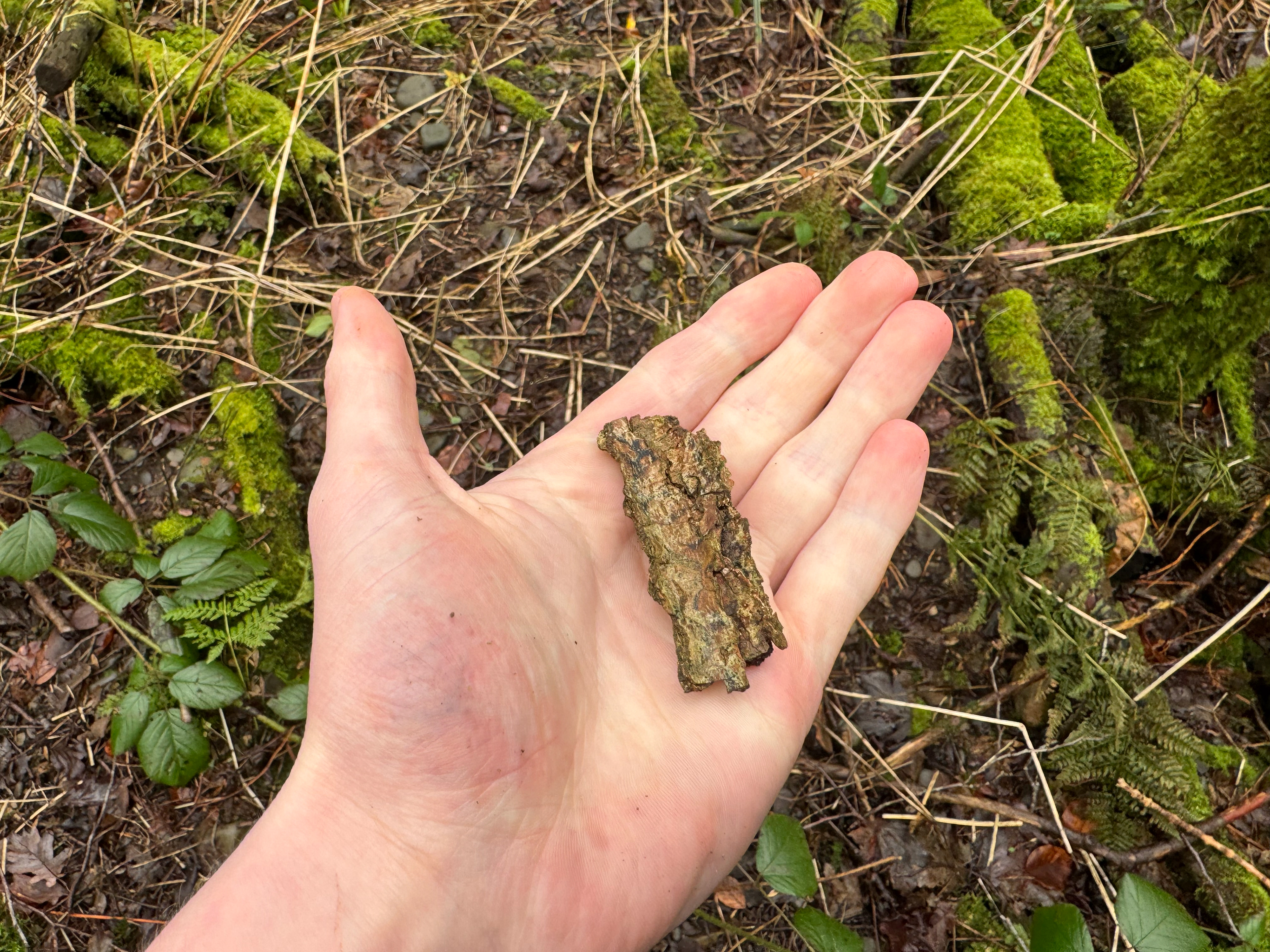
Tree bark I took
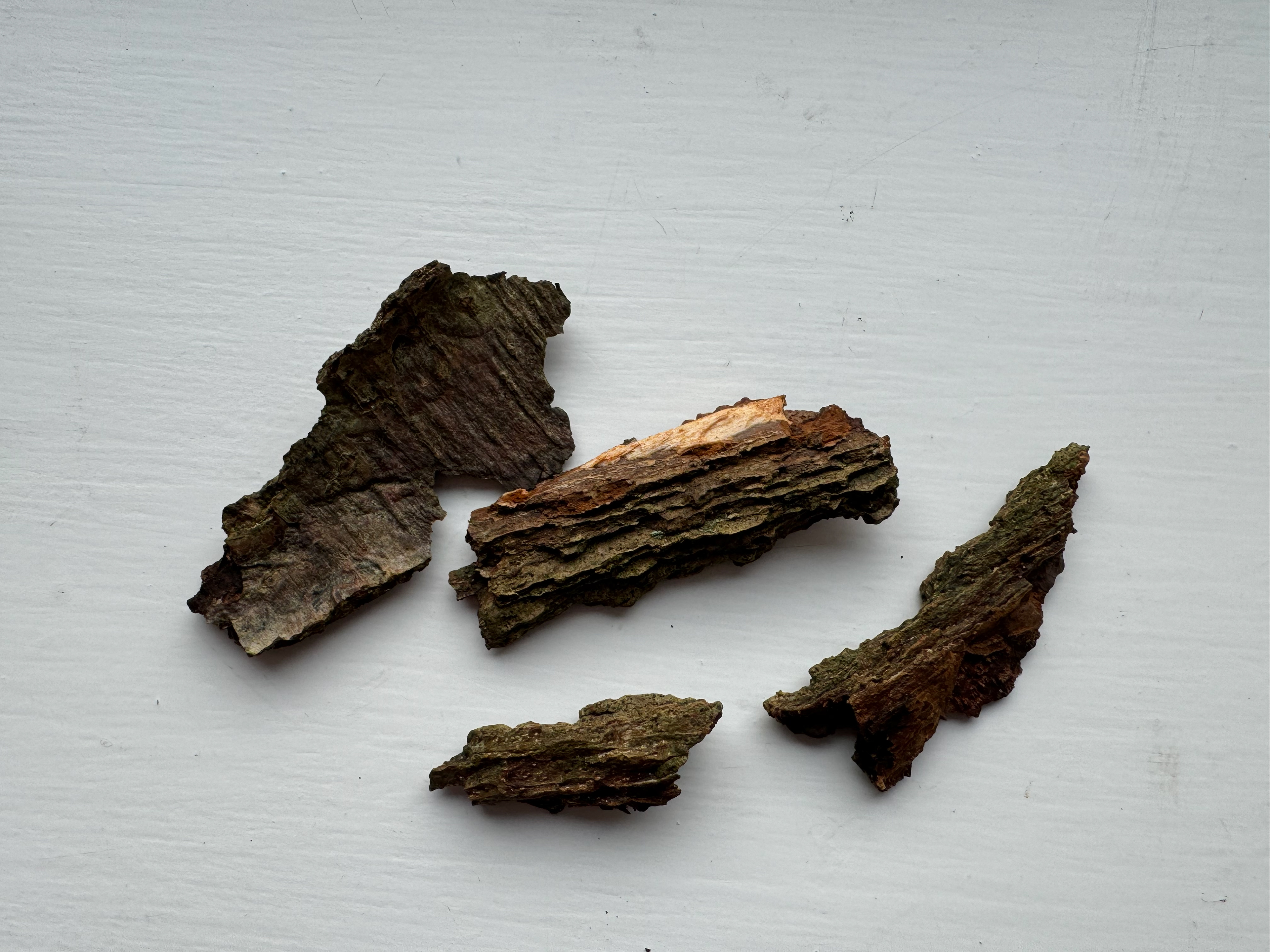
Tree bark I took
Further Design Development:
From my research of Alex Goad and his MARS project. I wanted to incorporate the lattice structure into my design. The bones of a hand naturally resemble a single lattice chain which allowed me to very easily adapt my design. Tree bark however is so detailed that the structure would not work. As a result I have decided to create a separate piece that goes around the bottom of the lattice structure to give the appearance that the bark transitions into the lattice structure. The piece that goes around the lattice would have imprints from the bark I collected above.
Research into the Helix shape: (Secondary Research)
The Helix shape is commonly found in DNA. "Double helix, as related to genomics, is a term used to describe the physical structure of DNA. A DNA molecule is made up of two linked strands that wind around each other to resemble a twisted ladder in a helix-like shape" (Genome, 2024). The double helix allows for compact storage of a vast amount of information. The two strands intertwine like a twisted ladder, maximizing the space for the crucial information-carrying bases while keeping the molecule stable. It's like storing books on cleverly designed shelves that fold inwards, saving space yet keeping everything accessible. DNA makes up humans and every living organism on Earth. Evolving on my initial design of tree and hands, I will incorporate the Helix shape. This piece of research is not just a direct reflection from the quote in the brief "Be inspired by the ingenious solutions and beautiful forms and structures of nature itself" but it's something I was drawn toward because of my research into tree bark. I noticed ivy was spiralling around some trees and I wanted to understand whether that pattern was something found across all of nature.
Genome, 2024 (Access 14th February 2024) - https://www.genome.gov/genetics-glossary/Double-Helix
Image: https://i.stack.imgur.com/F4QuP.png
Research into helix shape around trees: (Primary Research)
I went back to the woodland I got the bark from. I photographed the spirals of the vines crawling up different trees. The first image is of a tree that has fallen and you can see how thick the vines have wrapped around the trunk, so much so, you can't see the trunk at all. All these photographs show the helix pattern and how it varies. Some have very few and others lots. Thinner trees have less and thicker ones have more, which leads me to believe that they are a 'structural' part of the tree. They keep it from falling in strong winds by adding support. This shows just how crucial the Helix pattern is within nature.
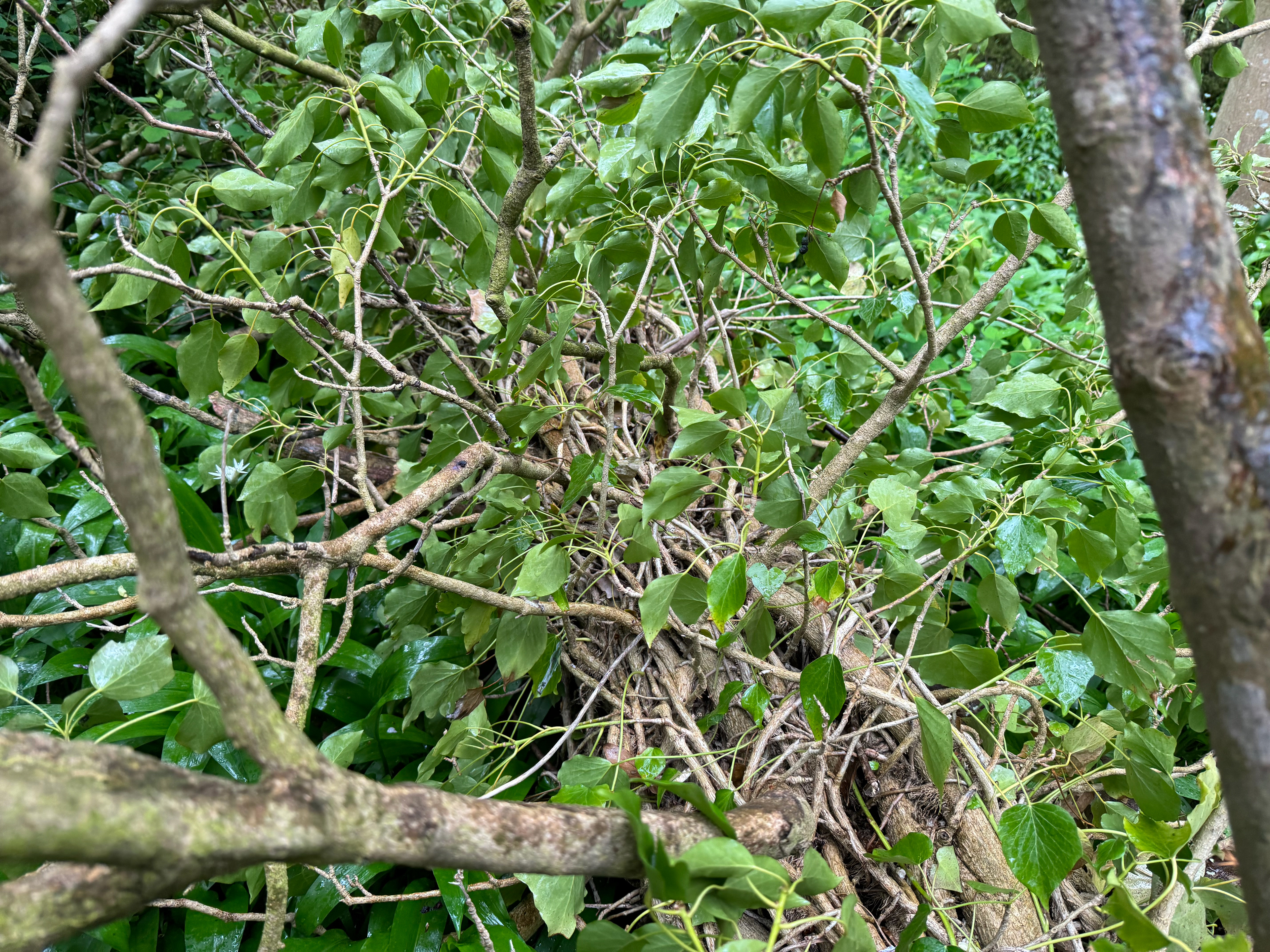

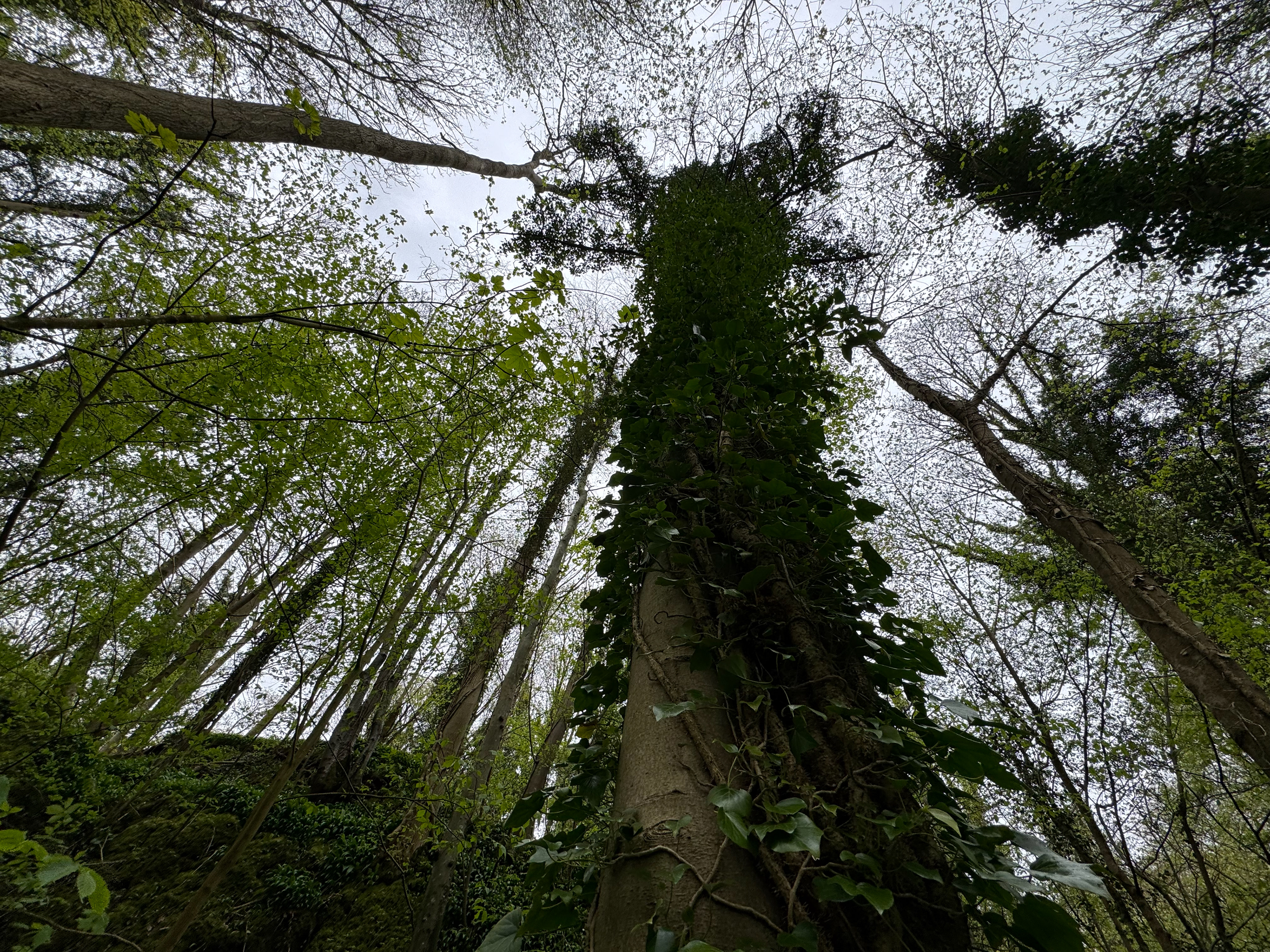


Further Design Development:
After making the stack and the fingers. I discovered that the stack looks like a Helix and I could take the design of DNA and try to manipulate my stack to resemble the Helix. Instead of building a whole hand, I can replace the stacks with stacks of fingers. The design nicely combines the human aspect with nature which fits this quote of the brief "inventing designs that promote the well-being of both humans and nature on a small scale". The design promotes well-being of both humans and nature because it directly relates to tie them together. If a finger (human/animal aspect) of the piece were to break then so would the helix (nature aspect) and vice versa. It directly shows you that connection that humans and animals have with nature and how the world couldn't survive without the one another, something we have forgotten. The Oxford dictionary definition for small scale is "of limited size or extent" and I am interpreting it as 'small extent'. Meaning this will have a small scale impact on the world rather than a small sized piece of work. By my interpretation, the design can be any size I desire.
Further Design Development:
Upon the disappointment of the previous design. I have decided to add an extra layer to the stack to clearly show and give emphasis to the helix shape.
CAD version of Twisted Stack:
Whilst getting feedback for my work, the idea of using the Ceramic 3D printer was floated. I was keen to at least try and develop something that I can test. Using the Ceramic Printer will help with accuracy and allow me to add details I wouldn't be able to do by hand.
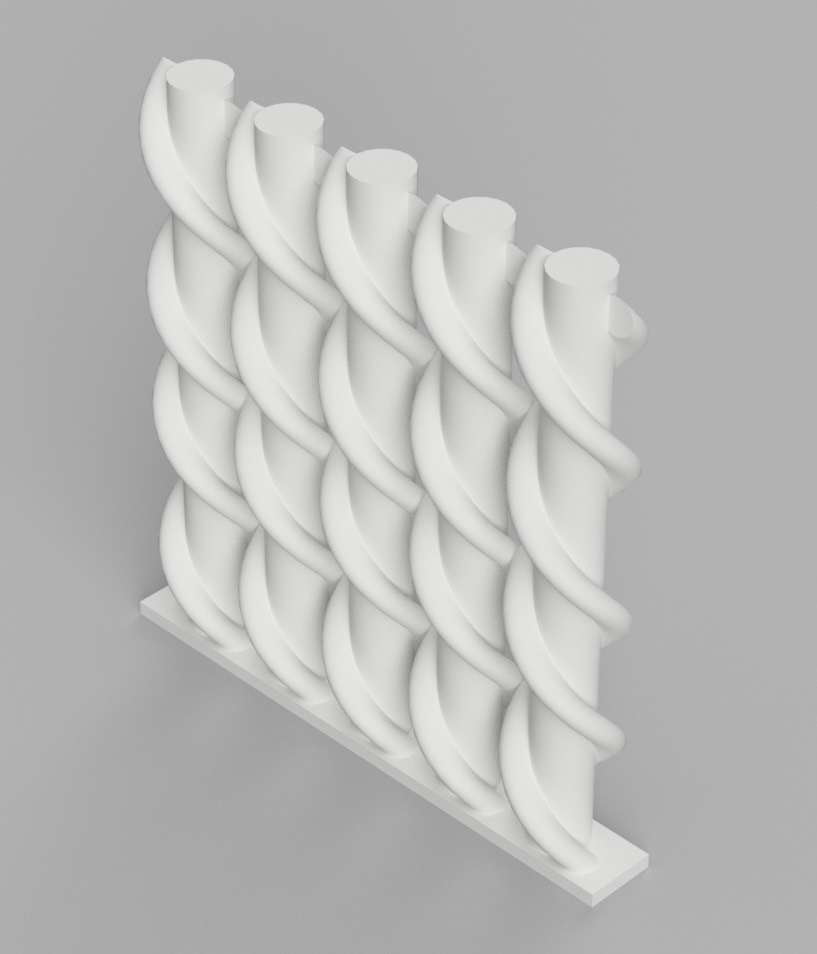
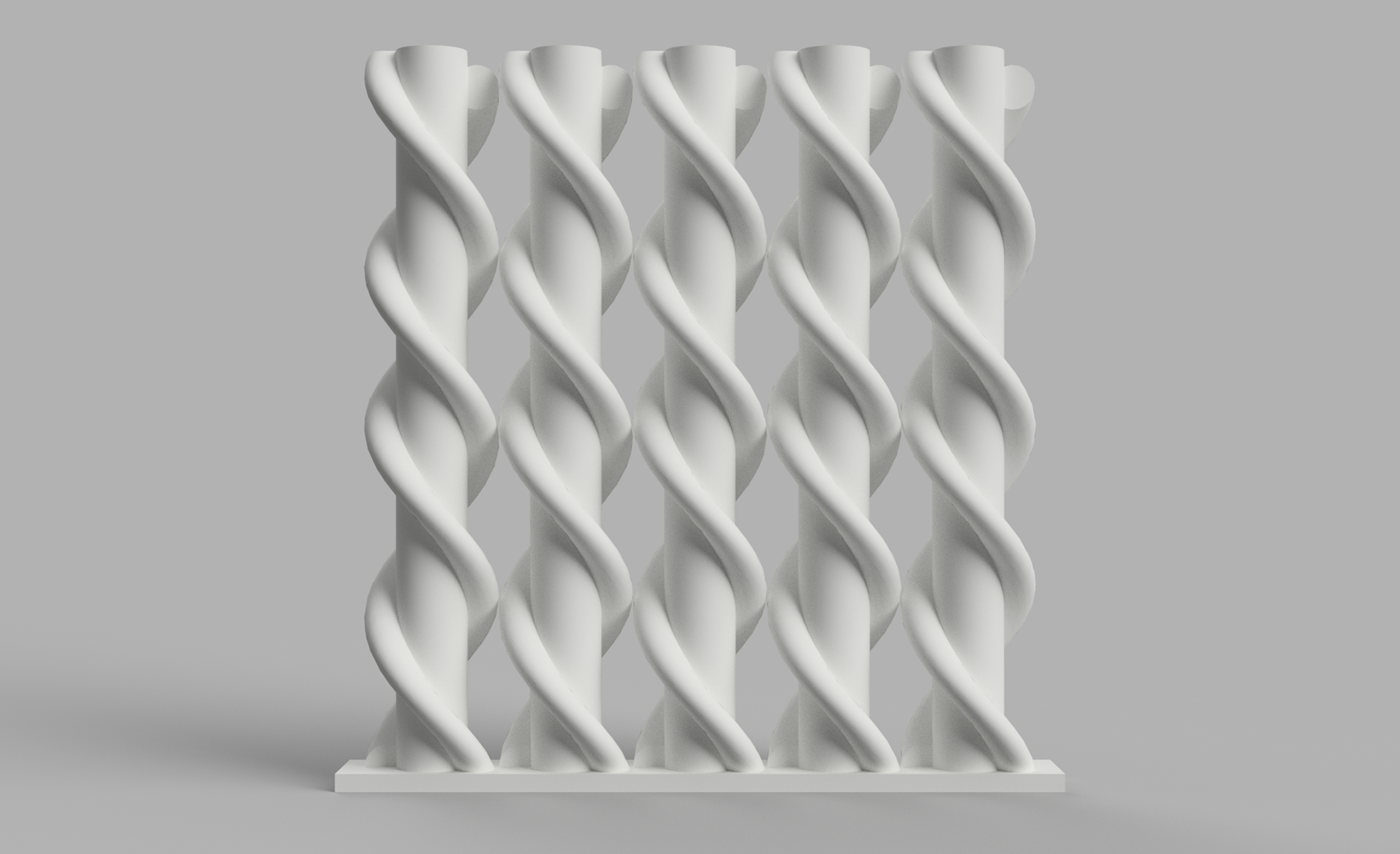
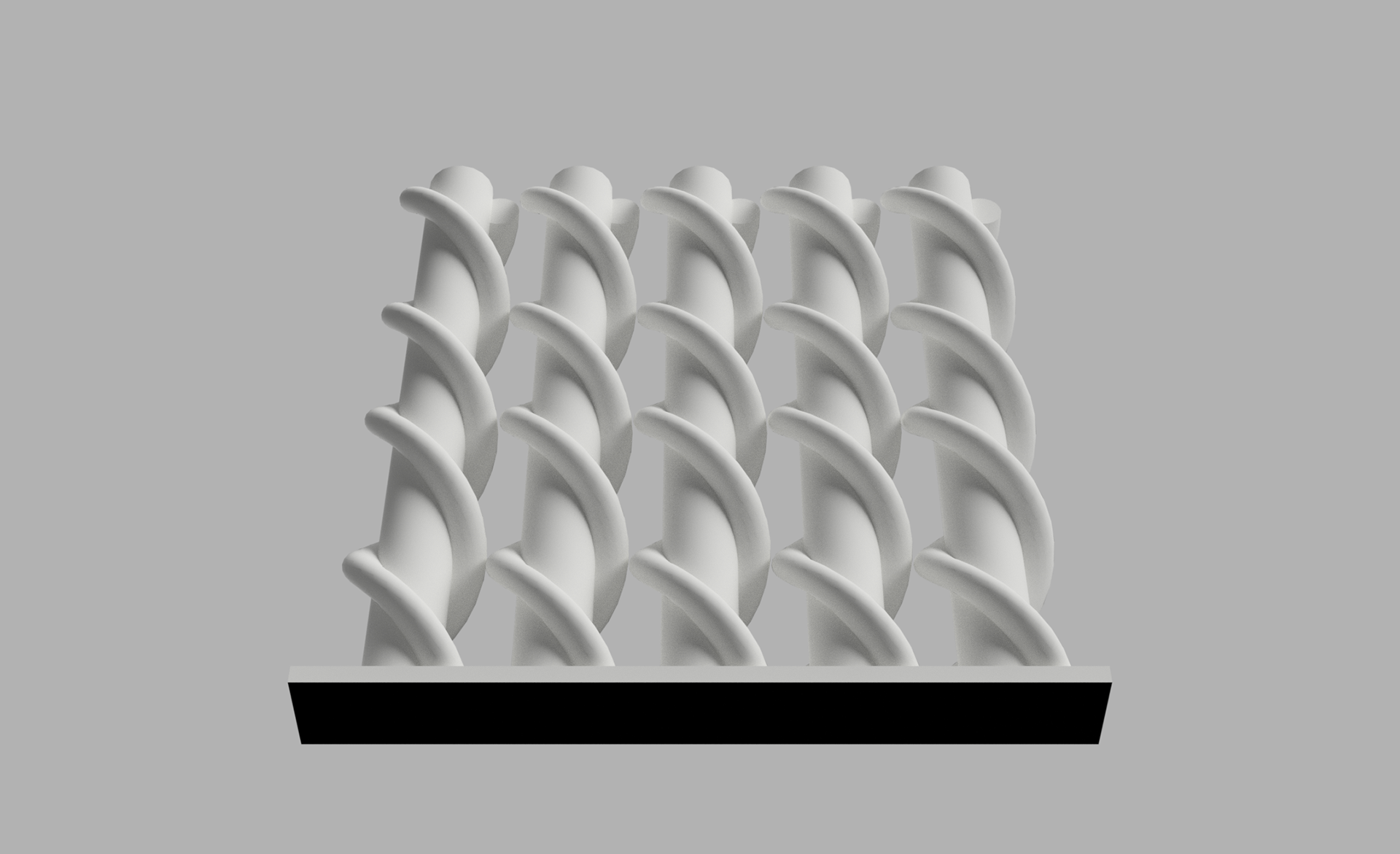
Ceramic 3D Printer:
I have been wanting to use the Ceramic 3D printer for a while. This project was the perfect excuse. Within the brief it says "think outside conventional production methods". Ceramic 3D printing is becoming more economically viable but still is unconventional, as a result it's perfect for this project. Cor Unum provides no list of tools or list of production methods they have available for use if I were to submit and be required to make the piece at there facility. Therefore the certainty of having a Ceramic 3D Printer is the same as having a throwing wheel or any other ceramic tool. Within the "Conditions for Participation" it does not state anything to do with tools. The only production condition is "must ultimately be producible in earthenware or porcelain" my design would be porcelain. I am currently using ivory stoneware because it is cheaper than porcelain and easier than any earthenware to get the consistency required. The remainder of the conditions are easily met. They encourage unconventional production methods so they must be ready for them. This is not my problem.
Ceramic Printer Information:
A ceramic 3D printer is different to a typical plastic 3d printer. Instead of buying in the material and feeding it into the machine, I need to buy the material (Ivory stoneware) and then manipulate it to be the correct consistency for the printer. Fortunately, a 3rd Year student provided me with the ratio of 1KG:50ml, clay to water which saved me time and money. The process to hydrate the clay was simple. Use my fingers to poke deep holes into the clay and the quantity of water poured over, then wrap it back up in plastic and leave for a couple days to properly hydrate. Once it is properly hydrated, I have to then wedge the correct amount of clay, ready for it to then go into the ceramic printer material canister. I also must tweak my Automaker Cura settings to work for a ceramic printer using a document provided to me.